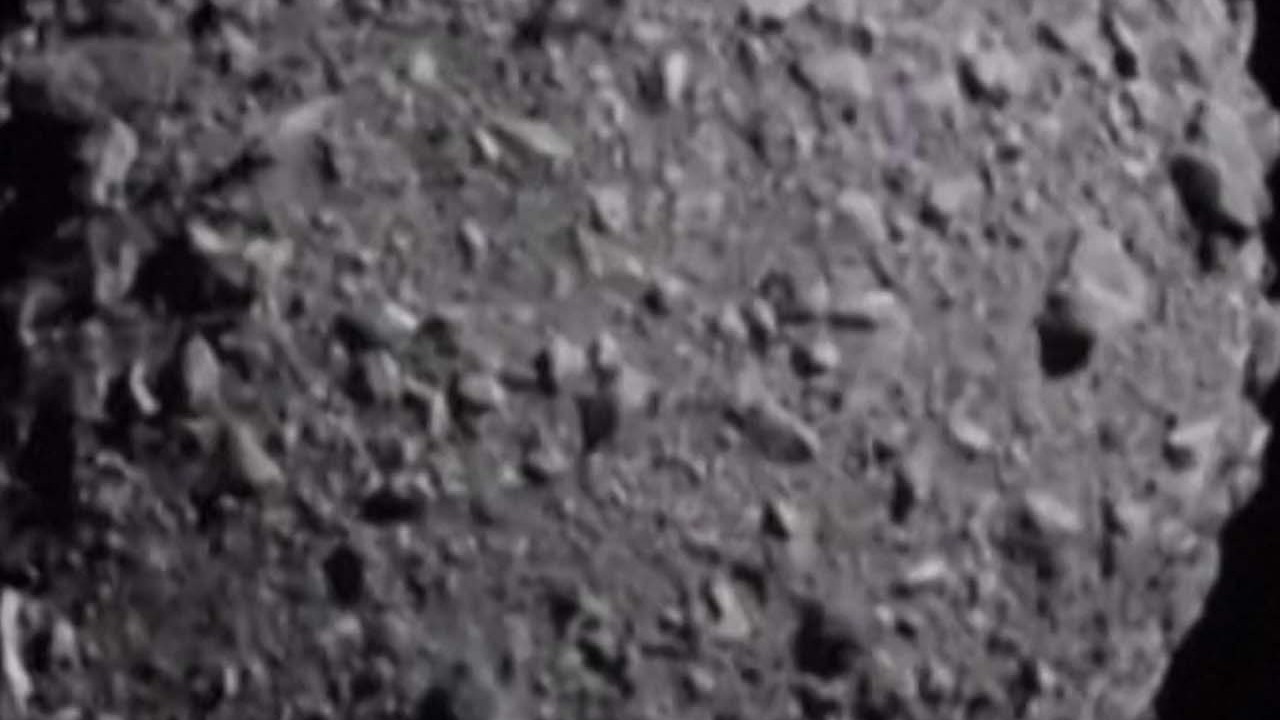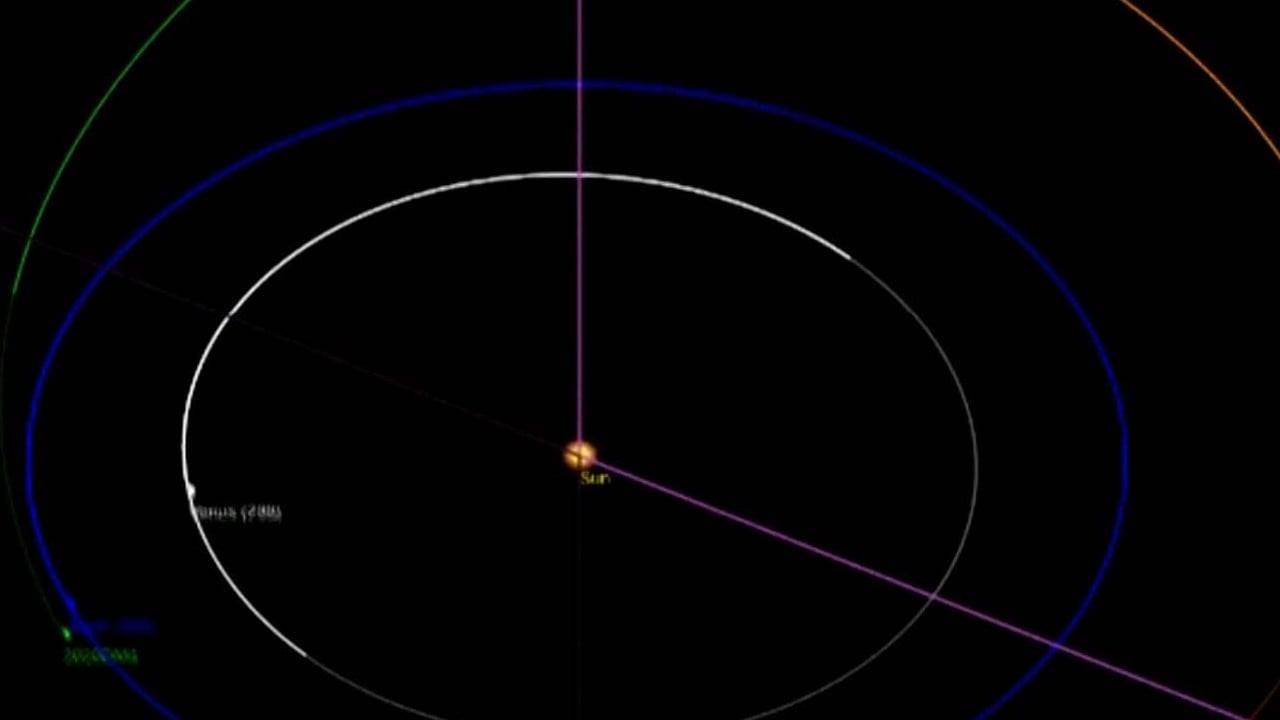
Valentine’s Day asteroid not likely to hit Earth after all, scientists say
- The newly spotted space rock with the potential to wipe out a city had spawned many alarming headlines, some warning lovers to cancel their dates in 2046
- The asteroid was recently given 1 in 432 odds of striking earth, but the probability has since fallen to 1 in 1,584
The chances have plummeted that a newly discovered asteroid with the potential to wipe out a city will hit Earth on Valentine’s Day 2046, the European Space Agency said on Tuesday.
The asteroid, which is named 2023 DW and is estimated to be around the size of a 50-metre Olympic swimming pool, was first spotted by a small Chilean observatory on February 26.
It swiftly shot to the top of Nasa and ESA lists of asteroids that pose a danger to Earth, leading to a raft of alarming news headlines, some warning lovers to cancel their Valentine’s plans on February 14, 2046.
Late last month the asteroid was given a one in 847 chance of hitting Earth – but the odds rose to one in 432 on Sunday, according to the ESA’s risk list.
However Richard Moissl, the head of the ESA’s planetary defence office, said on Tuesday that overnight the probability fell to one in 1,584.
“It will go down now with every observation until it reaches zero in a couple of days at the latest,” he said. “No one needs to be worried about this guy.”
Nasa on Tuesday lowered its own odds of impact to one in 770, meaning there was a 99.87 per cent chance that the asteroid will miss Earth.
“We tend to be a little more conservative, but it definitely appears to now have a downward trend in probability,” Nasa’s planetary defence officer Lindley Johnson said.
Fridge-sized asteroid hit Earth two hours after first spotted: Nasa
He said it was normal for the impact odds of newly discovered asteroids to briefly rise before rapidly falling. This is because new observations shrink the “uncertainty region” where the asteroid will travel to on its closest point to Earth, he said.
While the Earth is still inside that uncertainty region, the odds temporarily increase – until further observations exclude Earth and the probability drops down to zero, as is expected to happen with 2023 DW.
But what would happen in the increasingly unlikely event that the asteroid does strike Earth?
Davide Farnocchia, a scientist at Nasa’s Centre for Near-Earth Object Studies, said a good comparison was the Tunguska event, in which a similarly sized asteroid is believed to have exploded in the atmosphere above a sparsely populated area in Siberia in 1908.
“The resulting explosion flattened trees over an area of about 2,000 square km,” Farnocchia said. London covers an area of around 1,600 square km.
Moissl said that an asteroid the size of 2023 DW would create “regionalised destruction” and not have a major effect on the rest of the world.
The asteroid, which is orbiting the Sun, came around 9 million km from Earth during its most recent closest approach on February 18 – a week before it was discovered.
If it were to strike Earth in 2046, it would be speeding along at around 15km (nine miles) a second, according to estimations.
Asteroid with more force than biggest nuclear bomb to come close to Earth in 2029
There would be a roughly 70 per cent chance it lands in the Pacific Ocean, but the potential strike zone would also include the United States, Australia or Southeast Asia, Moissl said.
Even if the asteroid is heading our way, the experts emphasised that the world is no longer defenceless against such a threat.
Last year, Nasa’s Dart spacecraft deliberately slammed into the pyramid-sized asteroid Dimorphos, significantly knocking it off course in the first such test of our planetary defences.
Farnocchia said the “Dart mission gives us confidence that such a mission would be successful” against 2023 DW, if required. With 23 years to prepare, there is “ample time” for such a mission to be planned, Moissl said.
The ESA’s Hera mission, expected to launch next year to inspect the damage Dart had on Dimorphos, could even be repurposed for reconnaissance if necessary, he added.
Such plans would not be considered until the probability of an impact passes one in 100, when it would get the attention of UN-endorsed bodies like the International Asteroid Warning Network and the Space Mission Planning Advisory Group (SMPAG), Moissl said.
The aim of SMPAG is to “have everyone on the same page and avoid what happened in the movie Don’t Look Up,” in which “stupid stuff” happened because nations did not coordinate with each other, Moissl added.
Chinese scientists find traces of biggest asteroid strike of human age
However such defence mechanisms look unlikely to be required for 2023 DW.
“Everyone should relax, ignore the sensationalist headlines and stories, and watch how this situation plays out,” Nasa’s Johnson said, adding that any threat was likely to “evaporate” soon.
“Nevertheless, the planetary defence community will keep looking up!”

.png?itok=arIb17P0)

